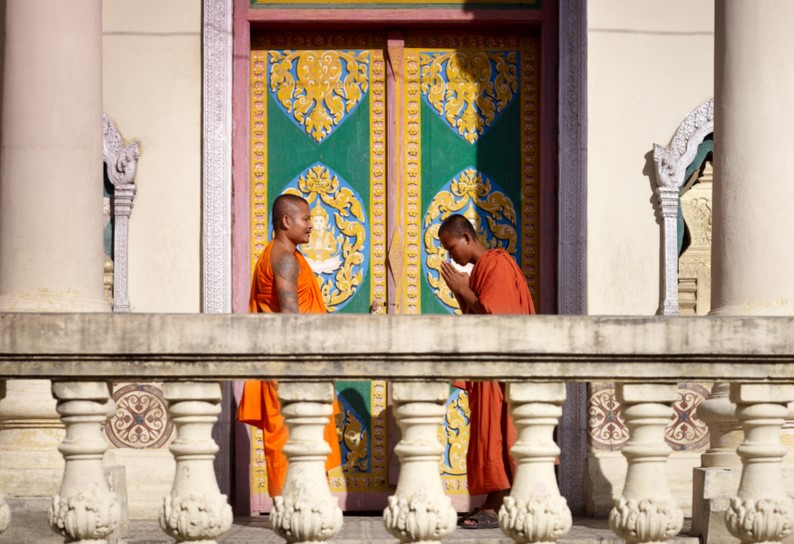
Martin Goodson
Greeting the Divinity in the Other
Exercises in Mindfulness
When we are overrun with the passions or if our mind has simply run away with us, the simple act of bowing can go a long way.
 ©
© shutterstock
The title of this exercise comes from a remark made by the American mythologist Joseph Campbell in The Power of Myth (1988), a series of interviews with him conducted by the television presenter Bill Moyers.
In one episode, Campbell spoke about the custom, in India, of greeting other people by placing the palms of the hands together and bowing. This act – which has variants all over Southeast Asia – represents, according to Campbell, acknowledgement by one divinity of the presence of divinity in others: “That is a greeting which says that the god that is in you recognises the god in the other.”
We also bow in the West – a gesture that takes a number of different forms. In Christian custom, the head may be bowed, as when in prayer; bowing can be genuflection, taking a knee, prostration, assuming a supine position face down on the floor (as when a Catholic priest is ordained). Jews and Muslims also bow in prayer. In the past, courtiers and others bowed to their superiors in the social order, and men and women bowed to each other in respect. Indeed, bowing can transmit respect, acknowledging it with the body.
Practitioners of Buddhism bow upon entering a meditation hall or shrine room. We bow to the Buddha, as the founder and source of the teachings we follow. There is a deeper meaning to this bow, too: we bow to the Buddha-nature that all forms possess, and to the Dharma, which is the essence of all things. That bow at the threshold, then, is also a bow to the Dharma, and to the heart.
A bow changes the heart: try it when you feel out of sorts, or upset over something or someone. Go somewhere to be alone, and bow nine times; if the heart is particularly upset, then try a full prostration, nine times. When you have finished, do you feel the same?
Having tried this out, and spoken with others who have tried it, I have found that the answer is – more often than not – that the heart feels lighter. Why should this be? Because a bow is the act of laying oneself down. The attachment to ‘I’ is the origin of our woes, as the Buddha points out in the Second Noble Truth. Anything that helps to lay this burden down lifts the heart out of the narrow confines of ‘I’ and permits reconnection to the Dharma – the inherent wisdom of the situation.
In Daoism, the ‘Dao’ refers to the harmony found within every circumstance; behaving in accordance with this harmony rather than against it is considered the best option. This harmony is the activity of the prajnaparamita – the wisdom-gone-beyond – and is the basis of Mahayana Buddhism, along with the warmth of compassion. ‘I’ am always thinking that it is ‘I’ who must put the world to rights … but how good are people, really, at doing this? As honourable and sincere as our intentions might be, we are often blind to our own impulsiveness.
Let’s take a different view. Astrophysicists date the birth of our universe to around 13.8 billion years ago. In all that time, it never had a plan, and yet we are witness to an incredible complexity of phenomena that, even now, with all our science, still seems to us a mystery and a wonder. In Buddhist parlance, this complexity comes from the inherent nature of the universe itself. What is more, we, too, have such an inherent nature, which reconnects us when the delusion of a separate self is laid down.
The act of bowing might not always be fully realised consciously, but it is a message from one part of the universe to the rest that, deep down, it remembers this inheritance. When we practise regular bowing and listen for a response, we might hear the message conveyed by the Great Spirit via an Inuit shaman to the early twentieth-century polar explorer Knud Rasmussen:
“Be not afraid of the universe.”




